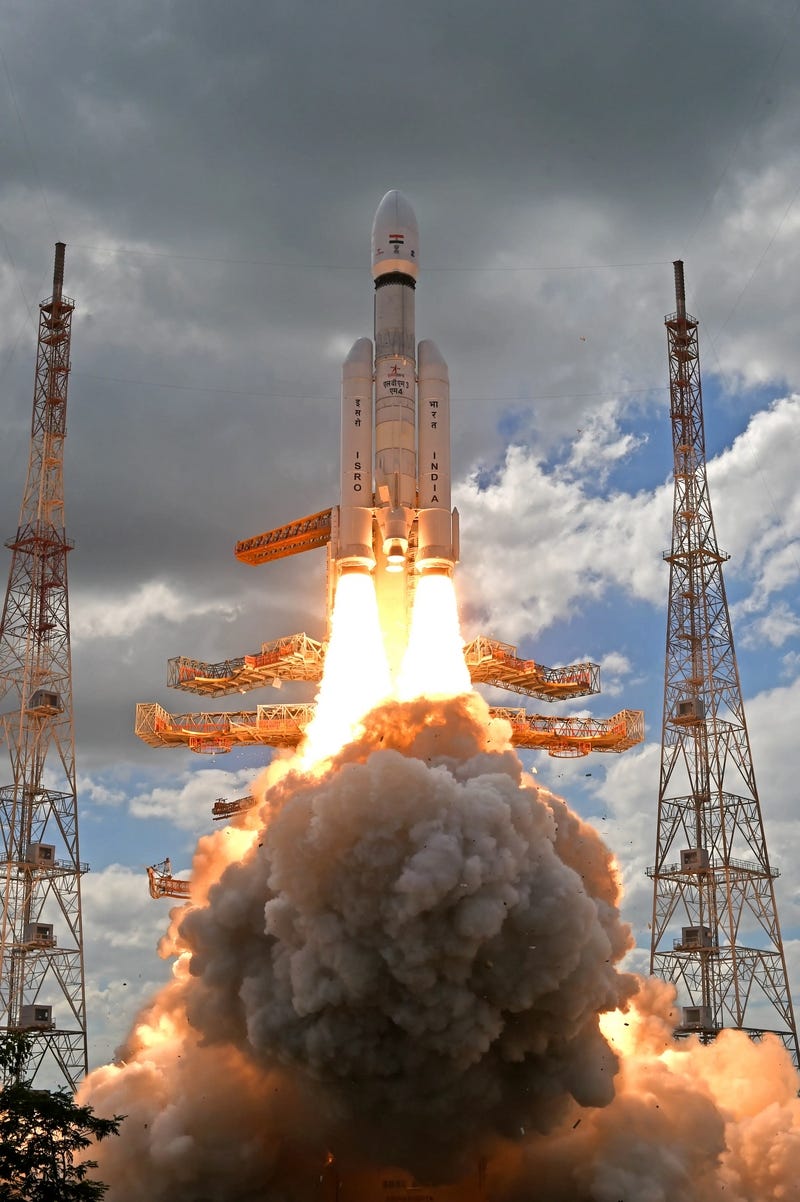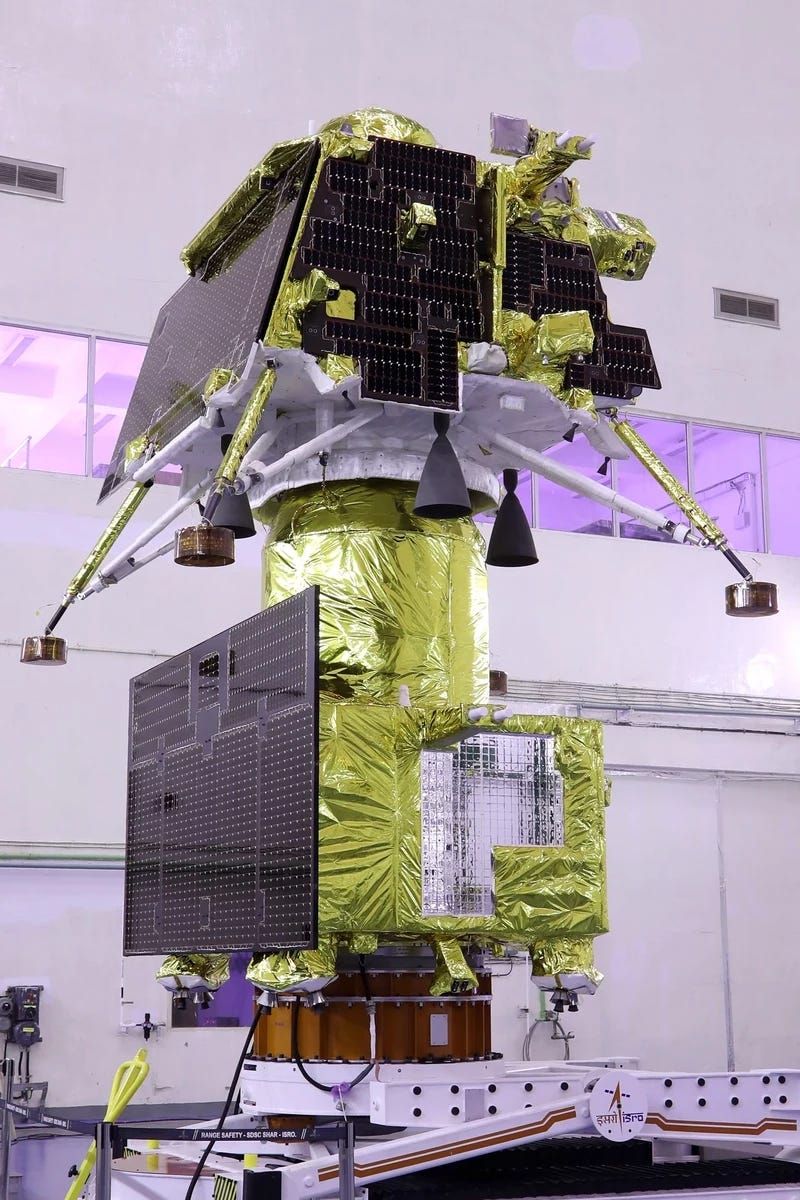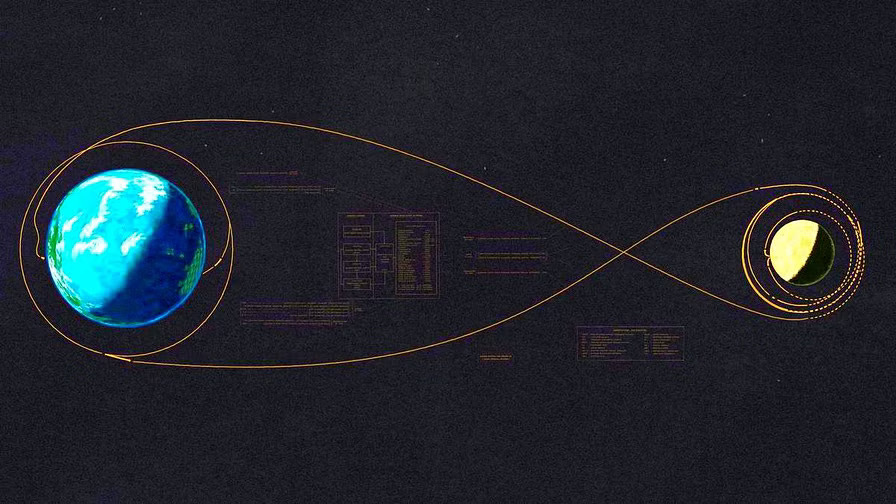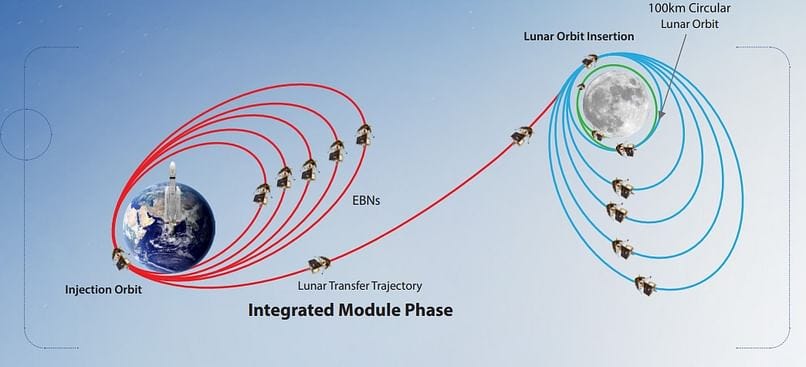Chandrayaan-3
Understanding its journey
Chandrayaan-3, India’s third lunar exploration mission, was launched by the Indian Space Research Organisation (ISRO) on Friday (14th July 2023) afternoon to land a rover on the Moon's surface, a feat achieved by just three nations so far. The mission is a follow-up of Chandrayaan-2 mission, which failed a desired soft landing on the lunar surface nearly four years ago in September 2019.
Chandrayaan-3 mission consists of the main objectives of exhibiting end-to-end capability in safe landing and roving on the lunar surface. The spacecraft is expected to touchdown Moon’s south pole region on August 23. The spacecraft consists of a lander (named Vikram), rover module (named Pragyan) and propulsion module configured with payloads to provide data related to the Moon's surface. The launcher identified for Chandrayaan-3 is GSLV-Mk3 which will place the integrated module in an Elliptic Parking Orbit (EPO) of size ~170 x 36500 km.

Technical details (mass, dimensions, landing site etc.) about the lander, rover and the payloads can be obtained from the ISRO’s website and as PDF document.
Choosing the month of July for the launch of Chandrayaan 3 was a special move because of a calculation made by ISRO regarding the closeness of Earth and Moon. It is anticipated that the Chandrayaan-3 mission will achieve a soft landing on the lunar South Pole region on 23 August.
Our topic of discussion will revolve around this point, i.e. why Chandrayaan-3 needs over 40 days to reach the moon when NASA's Apollo 11 took only four?
Brief Overview of Apollo 11 Mission
For long-distance travel in space, high velocities and direct paths are essential. The Apollo 11 mission accomplished this feat by employing a super heavy-lift launcher known as Saturn V, enabling speeds exceeding 39,000 kilometers per hour. The Saturn V rocket boasted a remarkable lifting capacity of 43 tonnes, including the lunar module, service module, and command module. Following its second orbit around Earth, the third stage of the Saturn V rocket positioned the modules onto a trans-lunar trajectory. Powered by robust engines, both the launcher and lunar craft completed the journey to the moon in a mere four days, covering an impressive distance of 380,000 kilometers.
During the period spanning from 1969 to 1971, each Apollo mission carried a cost of $185 million for NASA, equivalent to $1.2 billion in 2016. Notably, $110 million of this expenditure was allocated to constructing each Saturn V rocket.
Comparing Apollo-11 with Chandrayaan-3
As we see from the above image, Chandrayaan-3, is following a very different trajectory.
The mission uses a series of Earth orbits and engine burns to gradually increase the spacecraft's speed and position it for a lunar insertion.
The spacecraft is first placed in a geosynchronous transfer orbit by the GSLV Mark3 or LVM 3, which has a 4 ton lifting capacity. Then it performs engine burns at specific times to transfer to a trajectory that intersects with the Moon's orbit. Finally, another engine burn will be conducted to insert the spacecraft into lunar orbit.
This multi-step approach used by the ISRO for the Chandrayaan and Mangalyaan missions requires more time but allows for the use of a relatively less powerful launch vehicles. The budget allocated for Chandrayaan 3 is about $75 million, of which launching cost is about $9 million.
In detail….
While orbiting the Earth in an elliptical path, the module will reach its highest speed when passing through the point closest to our planet in that orbit, known as the perigee. On the opposite side of the orbit lies the apogee, where the module will be at its farthest from Earth, resulting in its slowest speed. This variation in speed is attributed to the Earth's gravitational pull, which affects the module differently at different points in the orbit.
As the module gets closer to Earth during the perigee, the gravitational pull intensifies, leading to a higher speed. During each perigee, the onboard engine ignites, further increasing the module's velocity and propelling it into a higher, more elongated orbit.
With each burn of the onboard propulsion system, the module spirals outwards, following increasingly elongated ellipses. Eventually, the module reaches the escape velocity required to break free from Earth's gravity, resulting in its orbit elongating and setting a course towards the moon.
To ensure a precise trajectory, the Chandrayaan-3 module enters the Lunar Transfer Trajectory (LTT) in synchrony with the moon's position in its own orbit. This calculated timing guarantees the module's proximity to the moon's orbit when the moon is positioned accordingly.
Upon reaching this position, the onboard propulsion system executes a precise manoeuvre called lunar orbit insertion, intended to reduce the module's velocity. The moon's gravitational field then pulls the module into a stable lunar orbit, successfully completing the vital phase of positioning the spacecraft around the moon.
Having escaped Earth's gravity and entered lunar orbit, the module commences revolving around the moon in an elliptical trajectory. A series of manoeuvres are then employed to gradually lower the module's altitude and position it in a 100 km circular orbit around the moon. It is at this stage that the propulsion module separates from the lander, allowing the latter to proceed towards the lunar surface.
Summary
While the GSLV Mk-III is a capable launch vehicle, it does not have the same power and payload capacity as the Saturn V used in the Apollo missions. As a result, instead of a direct path a more gradual trajectory was chosen to optimize the mission within the constraints of the launch vehicle. Hence, they use a circuitous route that takes advantage of earth's gravity and thereby takes more time. This method is called as a slingshot method, also known as a gravity assist. This strategic trajectory enables Chandrayaan-3 to conserve fuel have low overall budget while still reaching its lunar destination.





